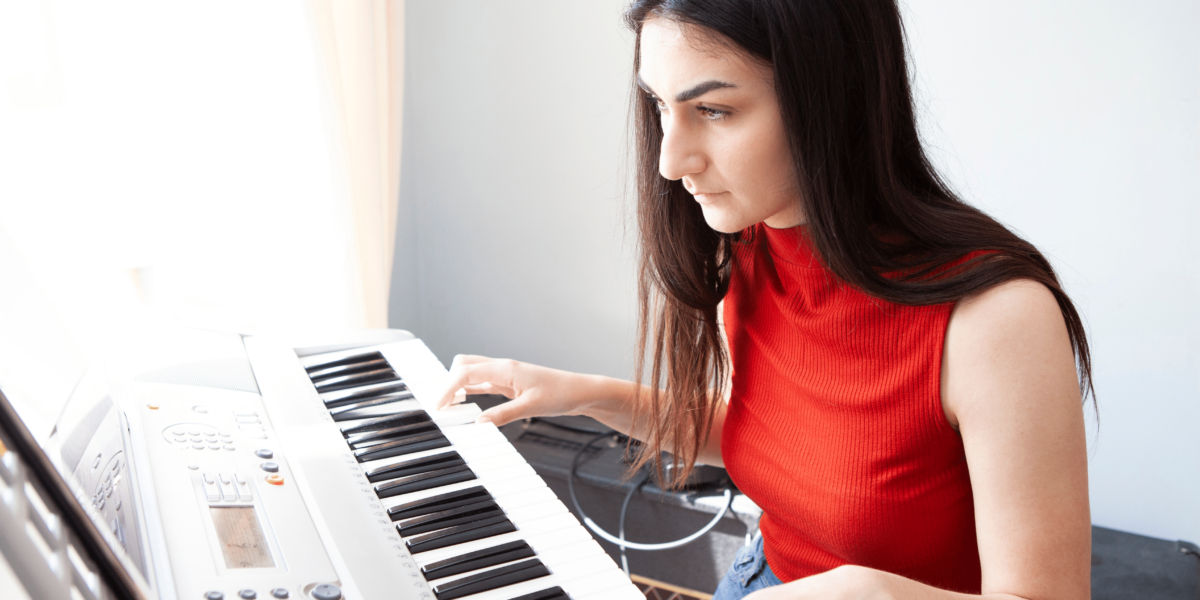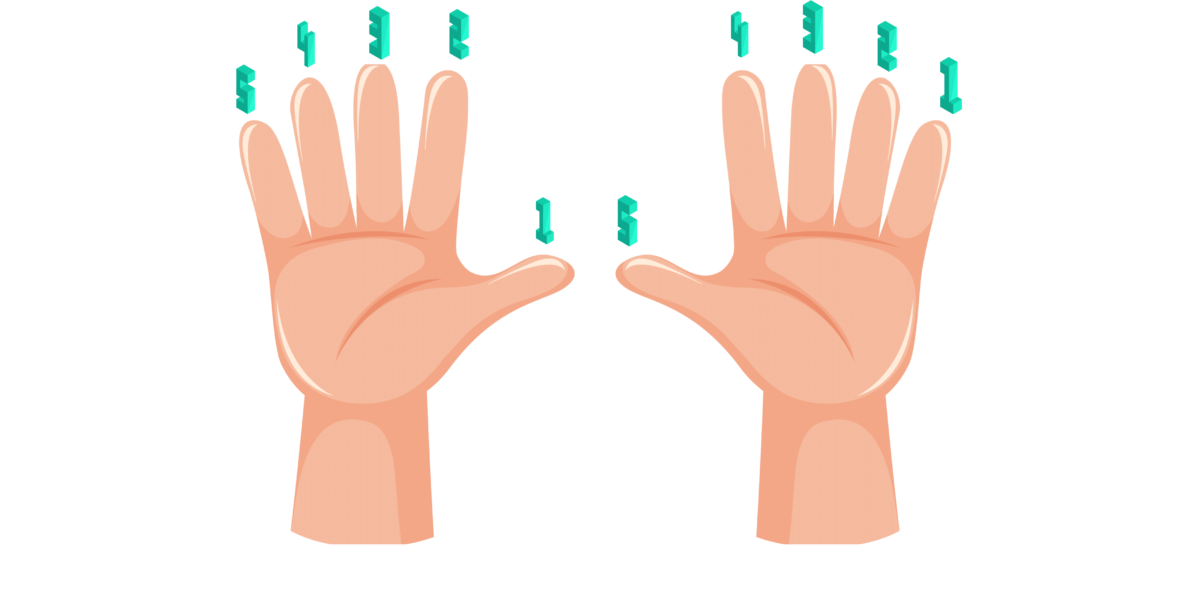How to Learn Piano by Yourself in 5 Steps

Planning to learn piano by yourself? Here’s a step-by-step process to effectively teach yourself how to start your musical journey on the right foot.
Teaching yourself a new skill is a great way to improve your abilities and feel accomplished. There are tons of reasons to learn and play the piano. Whether you want to play in a band or are simply looking for a cool hobby, learning the piano on your own can be a rewarding experience.
Although, learning any new skill (particularly on your own) can be intimidating. The trick is not to dwell on the lengthy process but instead to break down the journey into smaller goals that are easier to accomplish.
So how do you learn the piano by yourself?
This article provides five steps to help you learn the piano on your own.
How to learn piano by yourself.
Many benefits come with learning a new skill (particularly the piano). The first few steps are the trickiest. You have no base, no sense orientation. The realm of pianos is a mystery to you.
Don’t worry. It’s part of the journey.
All you need is a piano and the will to learn. With a structured approach, you can play the songs you love in no time!
1. Find a piano or keyboard.
Let’s face it. Learning to play the piano without having an actual instrument is impossible. So naturally, the first step is to get your hands on one.
While you may be tempted to acquire a brand new acoustic piano, the price may dissuade you. That’s a good thing. When trying something new, you want to know what it’s like before committing.
Besides, there are tons of affordable options available to you.
Thanks to technology, there are digital pianos and keyboards. They’re cheaper, easier to carry around, don’t require tuning, and sound virtually identical to their acoustic predecessor.
Another option to consider is buying a used piano. You can find an instrument of decent quality (digital or acoustic) for a fairer price. Check out platforms like the Facebook marketplace, sites like Craigslist, or any other online marketplace for pianos – you may even find one for free!
Lastly, you can always rent a piano. In the long run, buying is the more cost-effective solution, but renting lets you get your toes wet if you’re just trying one out.
2. Learn posture.
Like any skill you’re learning, you must instill good habits from the beginning of your piano playing journey (unlearning and relearning how to do things can be painfully tedious).
Assuming proper posture starts with getting a piano stand and a bench set to the right height for your stature. Once you acquire your setup, you must learn how to sit correctly.
Proper posture
Proper sitting can have a dramatic effect on your piano playing. Incorrect posture makes playing on your keyboard more difficult. It adds unnecessary tension to your body, which can lead to injury.
In a nutshell, proper posture includes sitting with your back straight, shoulders down, and relaxed so that your elbows rest slightly above your keyboard. Sit towards the front of your bench with your weight centered over your sit bones (buttocks). Your knees should be underneath the keyboard with your feet flat on the floor.
For a complete explanation of how to sit at your piano, take a look at our blog post How to Perfect Your Posture on Piano.
Hand positioning & fingering
Another crucial aspect of playing the piano depends on your hand placement. Everything from your technique when pressing your keys to how they move on the keyboard affects how you play.
Number your fingers from one to five to clarify hand positioning. For your right hand, the first finger is the thumb (1), and on your left hand, your pinky finger is number one (1). Count consecutively from the first finger to number the rest.

Learn how to position your hands in our blog Piano Hands: Myths, Technique & Tips.
Part of knowing where, how, and why you should place your hands lies in music theory.
3. Learn some music theory.
Whether it’s reading sheet music or understanding the layout of your keyboard, music theory is instrumental in teaching yourself how to play the piano. It helps you orient yourself on the keyboard, keep rhythm, and learn virtually any song more effectively.
Notes
The keyboard has seven octaves. Each octave contains seven natural notes C-D-E-F-G-A-B and five sharp (#) and flat (♭) notes.
As a beginner, you want to locate the Middle C at the beginning of the fourth octave.
Chords
A chord is a combination of two or more notes that you play at the same time. The most common chord is a triad, which makes up three notes.
To play a triad, identify a root note. From there, you find the third and then a fifth.
We break chords down into major and minor. Major chords give the music a happy, energetic feel, whereas minor chords create dark and sad sounds.
If you want a more in-depth look at chords, Piano Chords for Beginners: A Simple Guide is an excellent place to start.
Of course, you can learn all the notes in the world, but the music sounds dry and robotic without rhythm.
Rhythm
Understanding and knowing how to keep rhythm is crucial when playing music. With a bit of music theory under your belt, understanding rhythm is easy.
Notes come in various shapes and sizes. Beats tell you how long to hold or how quickly to play a given note.
4. Get a piano app.
Reading books and blogs and watching videos online are great resources that can help you improve your knowledge about playing the piano. Although, it divides your piano lessons into two sections: research and practice. There’s nothing wrong with that. However, merging theory and training can be helpful.
Piano apps make learning the piano incredibly convenient and intuitive. They’re a tool that can incorporate music theory and proper posture and implement games while teaching you to play.

An app can listen to the notes you’re playing using the microphone on your device. In a way, it’s like having a teacher. Only you decide when, where, and how long your lessons are.
There are many Android and iOS systems options, so finding a piano app that fits your needs and budget is easy.
5. Practice!
The last and most crucial step is to practice. Practice, practice, and then practice some more! Learning an instrument ultimately begins when you start playing. You can learn all of the theoretical knowledge there is to know, but it’s meaningless if you haven’t touched your keyboard.
Tips for practicing
- Be consistent – you’ll have good and bad days. Press the right keys with precision and control. You may wonder if you’re improving. The key to success is not giving up and enjoying the highs and lows.
- Practice with other people – everyone knows a musician, whether a friend or family, get together with people and make some music. They don’t even have to be pianists. See how your instruments flow together, be creative and have fun making melodic reverberations.
- Practice scales – learning the basics is an essential component of playing music. That’s because they translate directly to your music playing. If you can play scales smoothly, hitting those same notes while playing a song feels natural.
- Listen to piano pieces – by listening to piano music–whether it’s a classical masterpiece or a song cover–you familiarize yourself with the sounds the instrument makes. Eventually, you can recognize certain notes as you play them and know the following ones simply by listening. It can help you learn songs faster and improvise.
The keys are in your hands.
Learning and playing the piano can be an enriching experience–even more so if you teach it yourself. Picking up a new skill has never been as accessible with the internet and technology.
Learning the piano yourself allows you to choose what works best for you. However, following a guide or structured path can be helpful when you’re just starting. Simply Piano is an app that teaches you the fundamentals of playing the piano in a fun and engaging way. Build your piano foundation today!









